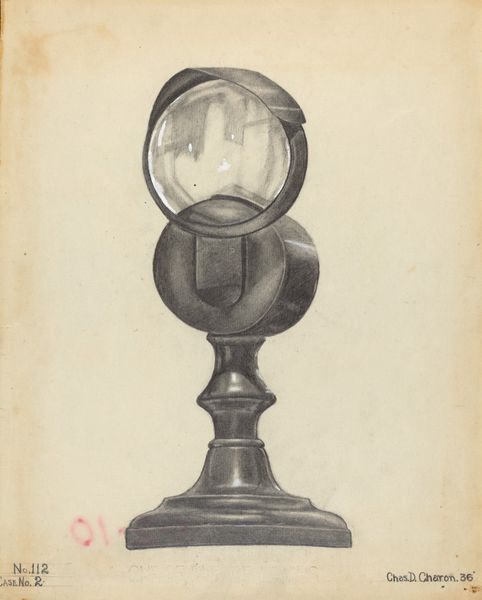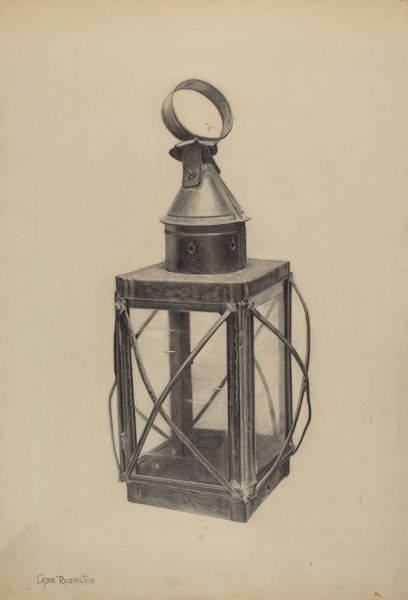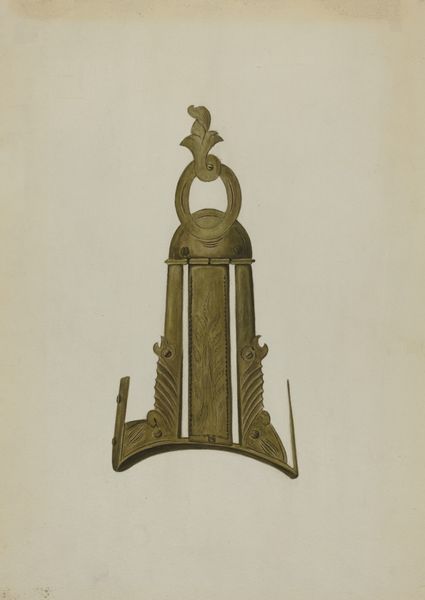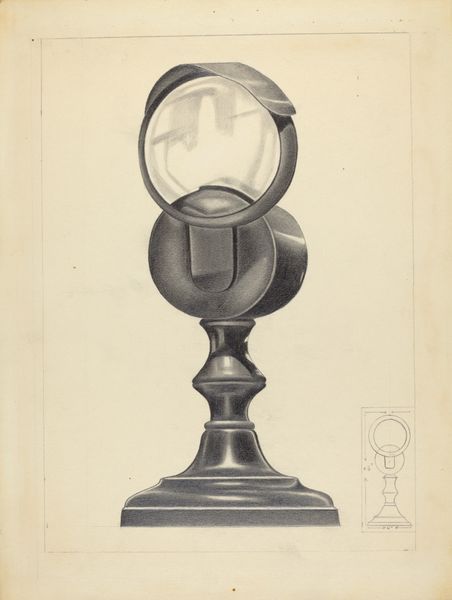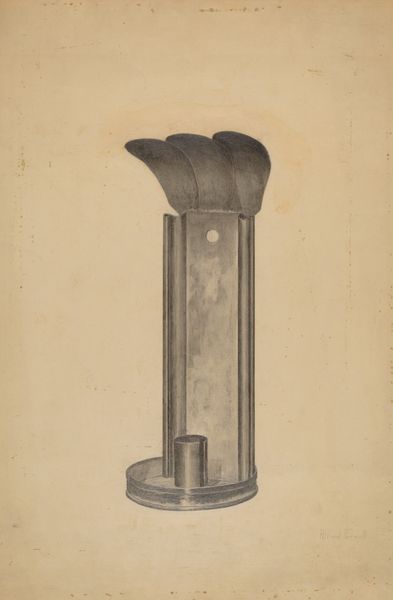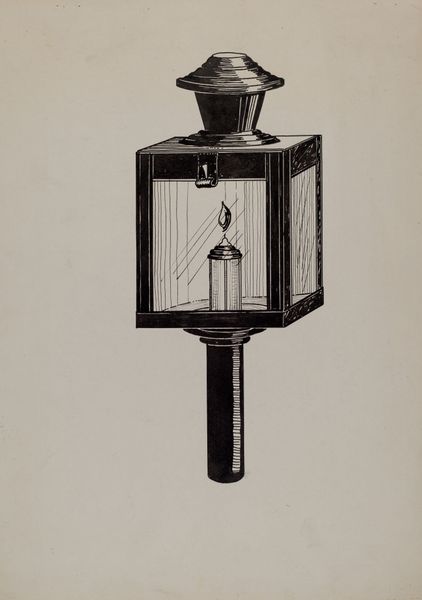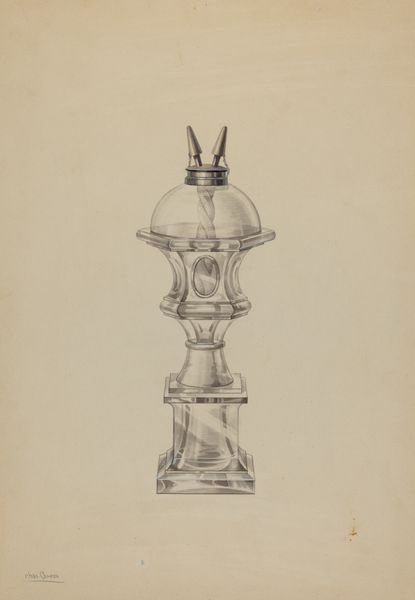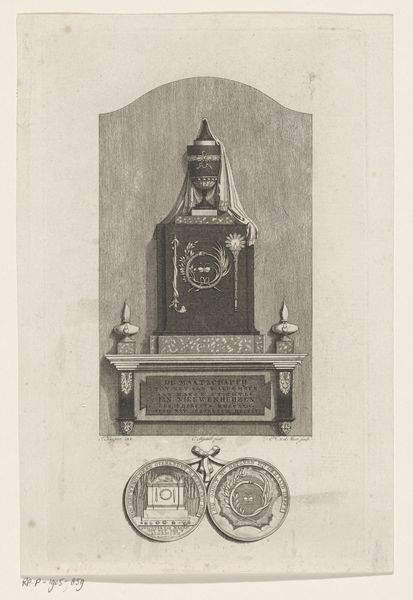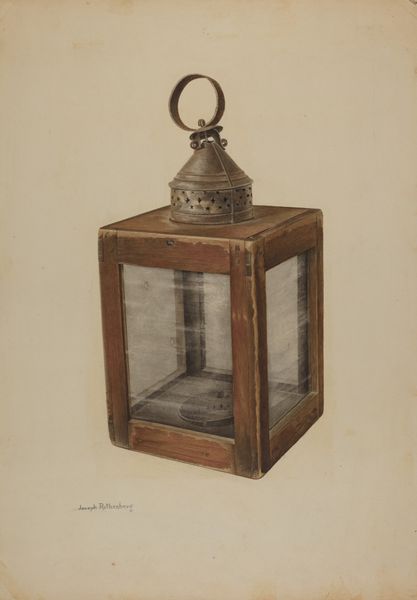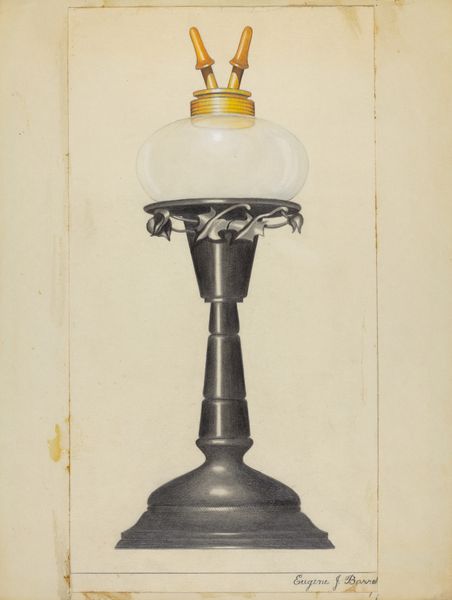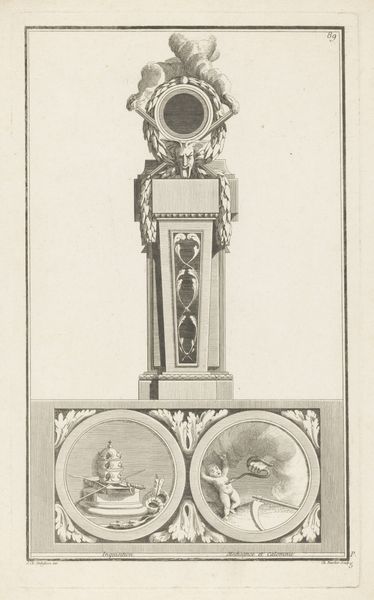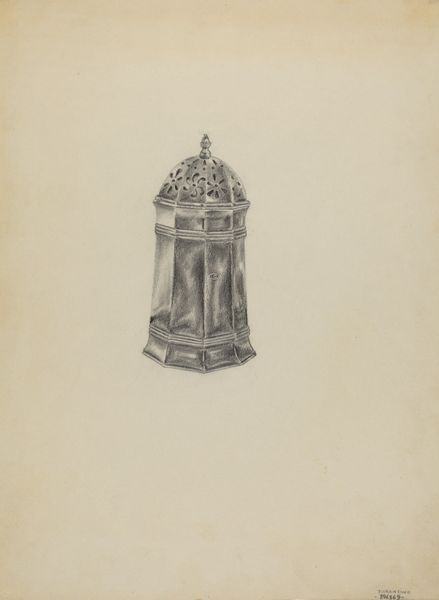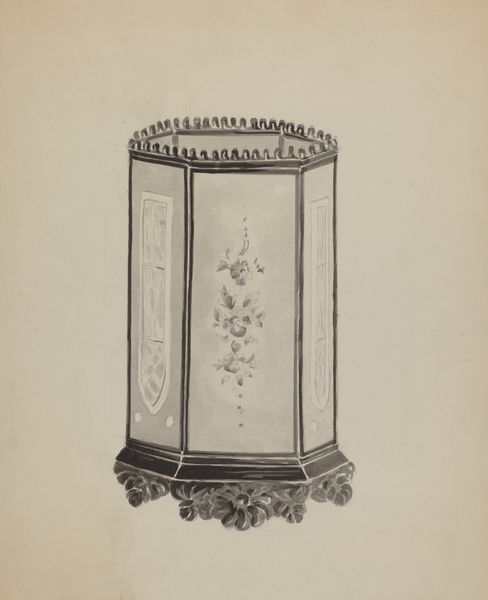
drawing, pencil
#
drawing
#
pencil drawing
#
geometric
#
pencil
#
academic-art
Dimensions: overall: 35.4 x 24.6 cm (13 15/16 x 9 11/16 in.)
Copyright: National Gallery of Art: CC0 1.0
Curator: Here we have Margaret K. Moore's "Metal Lantern," a pencil drawing from around 1936. The object itself is rendered with meticulous detail, it strikes me. Editor: It’s lovely, a bit melancholic maybe? The soft gradations of the pencil work create a quiet, almost reverential atmosphere. It makes you wonder about the craftsmanship of the lantern itself. Curator: The rendering suggests a geometric form with surprising complexity, the interplay of line and shadow highlighting its structural elements and decorative motifs. One has to consider this within its social moment, before, arguably the commodification of such religious symbols. Editor: Absolutely, consider the materiality. This isn't a photorealistic depiction aiming for illusion, but rather a focus on the process of rendering form. You can almost feel the artist's hand and control in the graphite itself as well as how it affects its presentation. What are your thoughts on how light might have impacted this decision? Curator: Well, within the broader context, it reminds us how these religious images functioned. Here, devoid of the cultural expectations that would inform devotional use, it seems that what's important here, as well, is her work with shadow to evoke both absence and potential light. This becomes an articulation about memory. Editor: Right, but by emphasizing the draftsmanship, doesn't Moore force us to confront the artistic labor? There is nothing subtle about this as craft, this deliberate quality resists high art notions, almost elevating functional design, despite its more overt associations with symbols or higher thinking? Curator: Indeed, we can also see it in line with critical discourses surrounding the division between art and craft in the early to mid-20th century. Her drawing destabilizes those established hierarchies and brings new forms into an important place. Editor: Yes! Considering labor and production, this allows us a closer appreciation not only for its conceptual potential, but as a social practice where it has lived or continues to do so, like seeing value where most simply accept commodity. Thanks! Curator: And thank you; through this discourse, its subtle complexity reminds me to be aware of what’s considered marginal or canonical with great attentiveness.
Comments
No comments
Be the first to comment and join the conversation on the ultimate creative platform.
